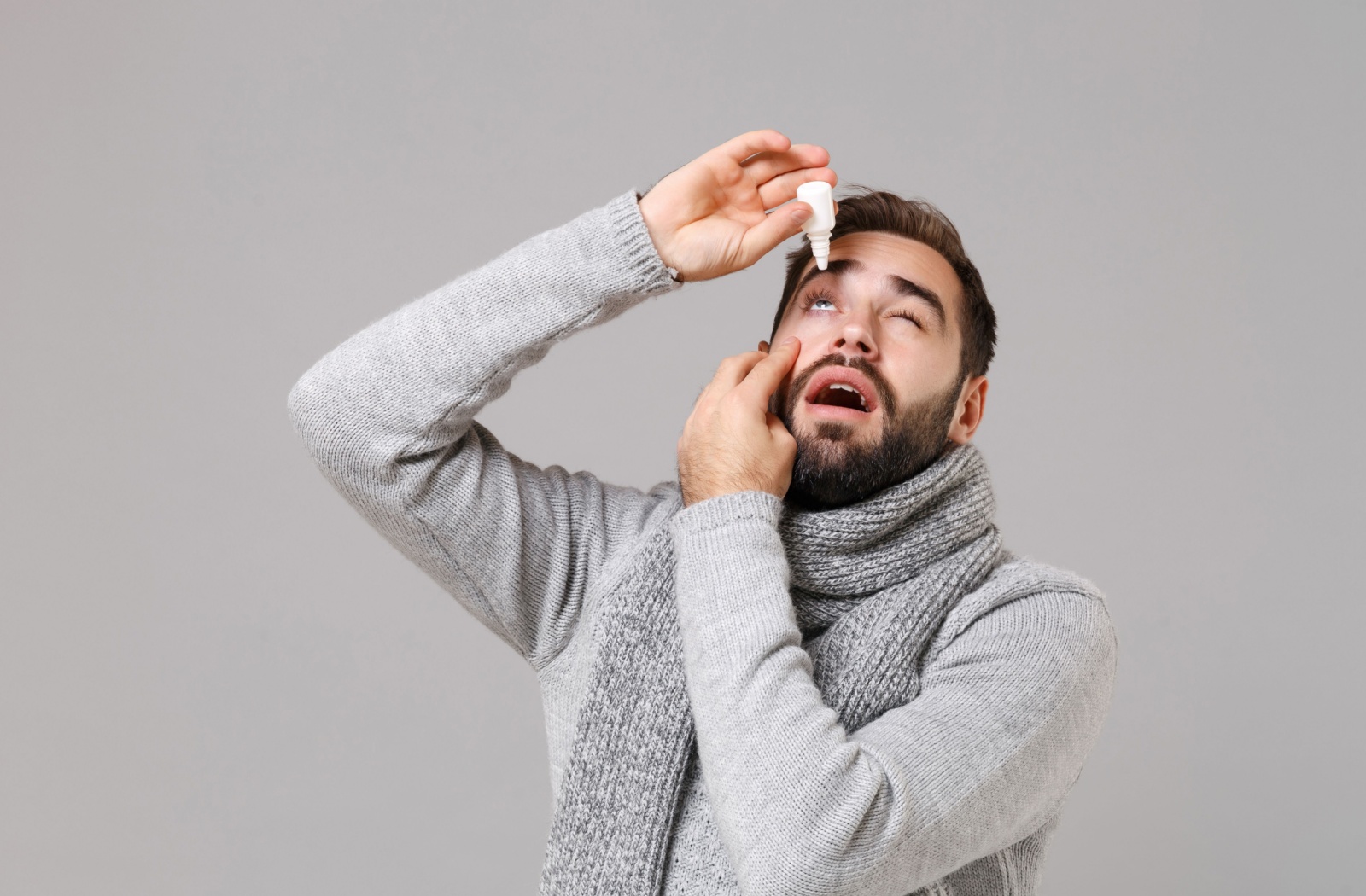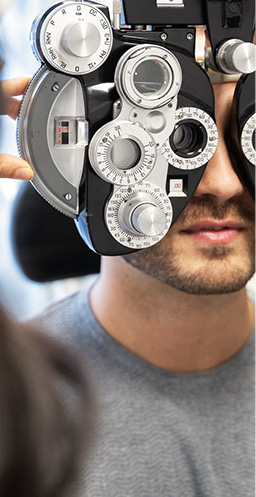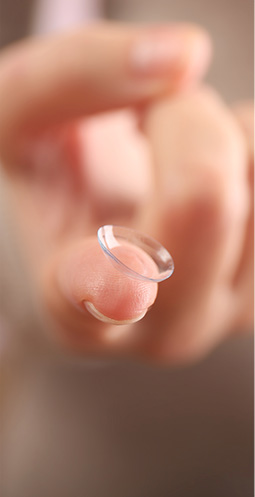Contact lenses can be a popular choice for many users, offering a comfortable and convenient alternative to traditional eyeglasses. However, amidst their numerous benefits, contact lenses are not without drawbacks. A common concern among contact lens wearers is the sensation of dry eyes.
Contact lenses can contribute to dry eyes or worsen dry eye symptoms. But you don’t have to give up wearing contact lenses. An eye exam can help your eye doctor determine the underlying cause and recommend ways to promote healthy eyes and vision with contact lenses.
All About Dry Eye
Dry eye is a surface ocular disease that occurs when your eyes don’t produce enough tears or tears that evaporate too quickly. An imbalance in the tear film can result in inflammation and irritation. Several causes of insufficient or poor-quality tears include age, hormonal changes, prolonged digital screen use, environmental conditions, certain medications, and health conditions.
Dry eye can be mild or severe. Common symptoms of dry eye can include the following:
- Redness
- Stinging
- Burning
- Grittiness
- Scratchiness
- A feeling of something foreign in the eye
- Excessive tearing
How Contact Lenses Cause Dry Eye
Water, oil, and mucous make up the tear film. These components lubricate the eyes, protect them from foreign material, and provide a smooth, even eye surface by preventing tear evaporation. While contact lenses are safe to wear and enhance vision clarity, they sit directly on the tear film and can interfere with its natural ability to hydrate the eye’s surface.
When worn, contact lenses separate the oil and water layers in the tear film, increasing the risk of dry eye in the following ways:
- Increased evaporation of tears
- Decreased tear thickness and volume
- Delayed spreading of the oil layer
- Increased friction between the contact lens and eye surface epithelium
Certain contact lens materials may also increase dehydration of the tear film, and a poor fit can irritate the eye further, worsening dryness.
Symptoms of Dry Eyes from Contacts
Contact lens wearers experiencing dry eye syndrome might notice symptoms such as:
- A stinging or burning sensation in the eyes
- Redness and irritation
- A sensation of having something “gritty” in the eye
- Blurred vision, especially toward the end of the day
- Increased sensitivity to light
Preventing & Managing Contact Lens Related Dry Eyes

If you are experiencing dry eye symptoms while wearing contact lenses, there are several measures you can take to alleviate the discomfort.
Choose the Right Contacts
Make sure you’re wearing the right contact lenses for your unique needs. A contact lens exam helps you find the correct prescription, size, and fit of contact lenses for your eyes.
Maintain Good Lens Hygiene
Proper cleaning and handling of your contacts can prevent the buildup of deposits and allergens contributing to eye irritation and dryness. Remember to remove, clean, and disinfect your lenses based on your wear schedule and use a cleaning and disinfecting system your eye doctor approves.
Use Rewetting Drops
Lubricating eye drops or artificial tears, specifically designed for contact lens wearers, can provide temporary dry eye relief. Use preservative-free products recommended by your eye doctor.
Limit Screen Time
Prolonged use of digital devices leads to a reduced blink rate, exacerbating dry eyes. Practice the 20-20-20 rule: every 20 minutes, look at something 20 feet away for at least 20 seconds.
Stay Hydrated
Overall hydration plays a crucial role in maintaining a healthy tear film. Drinking plenty of water throughout the day can help alleviate dry eye symptoms.
Optimize Your Environment
Use a humidifier in dry indoor environments and wear sunglasses as a barrier against harsh winds and sun exposure, which can increase tear evaporation.
Contact Lenses for Dry Eyes
Your eye doctor can recommend contact lenses for dry eye to reduce symptoms and discomfort based on your eye health, lifestyle, and prescription.
Changing the Lens Type
Opt for lenses made from materials designed for high breathability and moisture retention. Silicone hydrogel contacts are often recommended for their oxygen permeability, which can help reduce dryness.
Changing to Daily Disposable Contact Lenses
Switching the wear schedule from reusable monthly lenses to single-use or daily disposable contact lenses can lead to fewer dry eye symptoms. Reusable lenses can develop a build up of protein and lipids on the surface of the lens which may not be fully removed with cleaning. This will lead to dry eye symptoms. Daily disposable lenses eliminate this issue and the comfort will be consistent on a daily basis as a fresh lens is used each day.
There are also numerous brands that offer daily disposable contact lenses, with various types of materials available. Some may be more comfortable and more suitable than others for a specific patient. It is best to have your eyes checked by your optometrist with a comprehensive eye exam, who can then determine which specific lens will be your best option.
In Office Treatments for Dry Eyes
In office dry eye treatment such as IPL (Intense Pulsed Light treatment) may reverse some of the issues with dry eyes, and allow a patient’s eyes to feel more lubricated naturally, thus allowing a more comfortable contact lens wearing experience.
Personalized Eye Care for Dry Eye
While contact lenses offer many advantages, they can pose challenges, such as increased dry eye symptoms. By understanding the causes of dry eye, watching out for symptoms, and implementing preventative measures, you can enjoy the benefits of contact lenses without sacrificing your eye comfort.
If you’re experiencing persistent discomfort with dry eyes or contact lens wear, book an appointment with Stoney Creek Eye Care to determine the underlying cause and receive personalized treatment recommendations.









